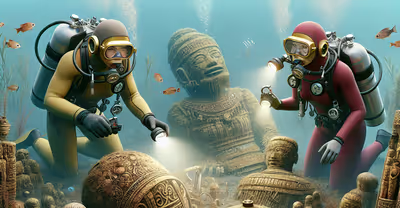
Key Takeaways
- Lakes are unexpected reservoirs of history.
- Diverse artifacts reveal stories from different eras.
- Discoveries connect us with past cultures and events.
Lakes are more than just serene waters.
Imagine uncovering treasures with a story, hidden for centuries beneath the tranquil surface—exciting, isn't it?
Did you know that lake beds can be historical goldmines?
Artifacts ranging from prehistoric tools to lost wartime relics rest in their silty layers, waiting to be discovered.
Trust us, the submerged stories of human history found in lake beds across the United States are both compelling and remarkably diverse.
From time-worn canoes to sunken steamboats and aircraft, these finds stitch a rich tapestry of narratives; and yes, even the glint of Gold Rush remnants can be glimpsed.
Ancient tree stumps stand sentinel in Superior, bearing witness to epochs past, while weapons of war lie peacefully in Carolina's depths.
So don your virtual scuba gear as we dive into the realm of the extraordinary and the long-forgotten.
Native American Canoes in Lake Mendota, Wisconsin
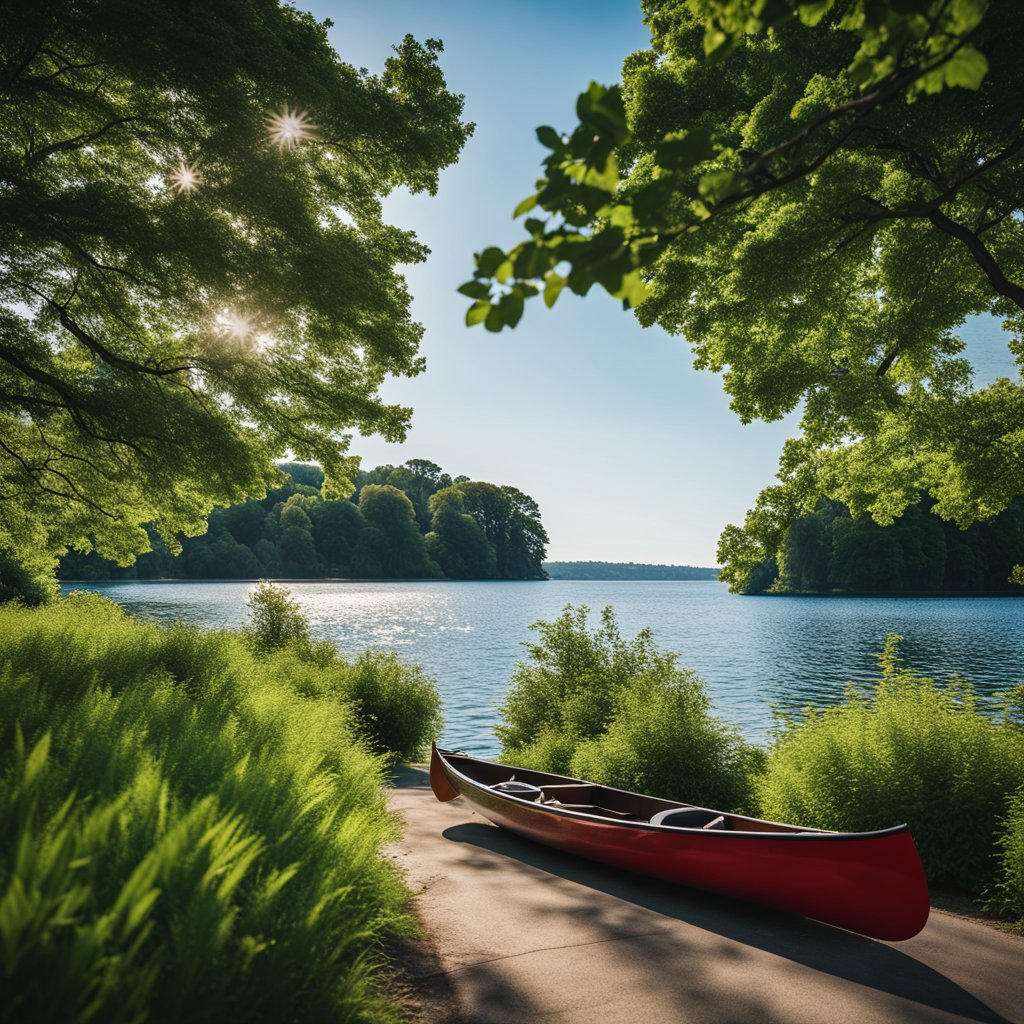
Have you ever pondered what secrets lie beneath the tranquil waters of Lake Mendota in Wisconsin?
Imagine gliding over the lake's surface, unaware that just below, a fleet of ancient canoes is nestled in the mud.
Archaeological dives into Lake Mendota have unearthed a treasure trove of Native American canoes, offering us a rare glimpse into a bygone era.
How many canoes did they find?
More than 30!
These vessels are not just any old boats; some of them have been resting there for over a thousand years.
That's right, these handcrafted dugout canoes are a direct connection to the early Native American occupants of the region.
Quick Facts:
- Oldest Canoe: Approximately 1,200 years old
- Discovery: Made by recreational divers and archaeologists
- Preservation: Efforts in progress, future display planned for 2027
- Significance: Offers insights into ancient craftsmanship and daily life
The discovery of these artifacts is extraordinary.
Each canoe tells a story, revealing the ingenuity and way of life of the indigenous people who once navigated these waters.
What's happening with the canoes now?
- They are being carefully preserved by experts.
- Plans to showcase them in the Wisconsin Historical Society's future Wisconsin History Center are in the making, set to open in 2027.
So next time you're in Wisconsin, remember that beneath the serene surface of Lake Mendota lies a hidden chapter of Native American history, silently waiting to tell its story.
Isn't it fascinating to think about the history that's literally under our feet—or, in this case, our boats?
Viking Sword in Lake Michigan

Have you ever fancied stumbling upon a historical relic, perhaps even a Viking sword?
Incredible as it may sound, Lake Michigan might have been the resting place for just such an artifact.
Imagine the surprise when a sword, which some speculate to be of Viking origin, was uncovered from the depths of this Great Lake.
- Discovery: The reported find adds to the narrative of pre-Columbian trans-oceanic contact, a topic of both excitement and skepticism among historians and archaeologists alike. It challenges our understanding of early exploration, hinting that Norse voyagers might have journeyed further than we thought.
- Debate: The legitimacy of the sword is a matter of debate, providing fodder for discussions among enthusiasts and experts. The question remains—did Vikings actually make their way to what is now Michigan?
While the thought of Vikings in America might feel more suited to a storyline from your favorite historical drama, the possibility can't be ruled out entirely.
The sword's discovery lends a sliver of weight to the theories that tell us we might not know everything about those intrepid seafarers from the north.
Remember, whether fact or carefully constructed fiction, objects like this can be a treasure trove of ideas and insights.
If the sword in Lake Michigan does stem from the Vikings, what stories could it tell us about their seafaring adventures?
Just imagine the secrets it has been keeping, nestled beneath the glistening waters all these years.
Quick Facts:
- The sword was found in Lake Michigan, one of the five Great Lakes of North America.
- Lake Michigan is known for its shipwreck-seeking explorations.
- Artifacts like these are crucial to understanding potential pre-Columbian trans-oceanic contact.
Don’t you love a good mystery?
Whether the Viking sword is genuine or not, its discovery definitely stokes the flames of curiosity!
Prehistoric Stone Tools in Lake Huron

Imagine diving into the chilly depths of Lake Huron and stumbling upon an ancient world hidden beneath its waves.
You're not dreaming—it's real!
Archaeologists have been piecing together an incredible underwater puzzle that whispers tales from 9,000 years ago.
Beneath the surface, they've uncovered stone tools and prehistoric carvings that offer us a snapshot of life from a time when woolly mammoths still roamed the earth.
Fancy yourself a prehistoric hunter?
Lake Huron's bed has revealed extraordinary hunting blinds, sophisticated structures meticulously arranged for trapping game.
Wondering how such artifacts ended up there?
Back when these tools were in use, this area wasn't underwater at all.
It was a dry ridgeline where ancient peoples thrived.
Here's a quick dive into what has been found:
- Tools from afar: Some of the stone tools originate from an obsidian quarry over 2,000 miles away in Oregon.
- Micro-ecosystem: The Alpena-Amberley Ridge, once a dry land bridge, provided a rich ecosystem where these early inhabitants could hunt.
- Ancient engineering: The human-built stone structures spread out like a football field and showcase complex hunting strategies.
Isn't it mind-boggling to think about the stories these artifacts hold?
Without a doubt, the chilly waters of Lake Huron are guarding secrets of ancient ingenuity, waiting for you to explore.
So, next time you gaze upon this Great Lake, remember there's more than meets the eye—there's a history 9,000 years deep!
Civil War-Era Artifacts in Lake Wylie, South Carolina
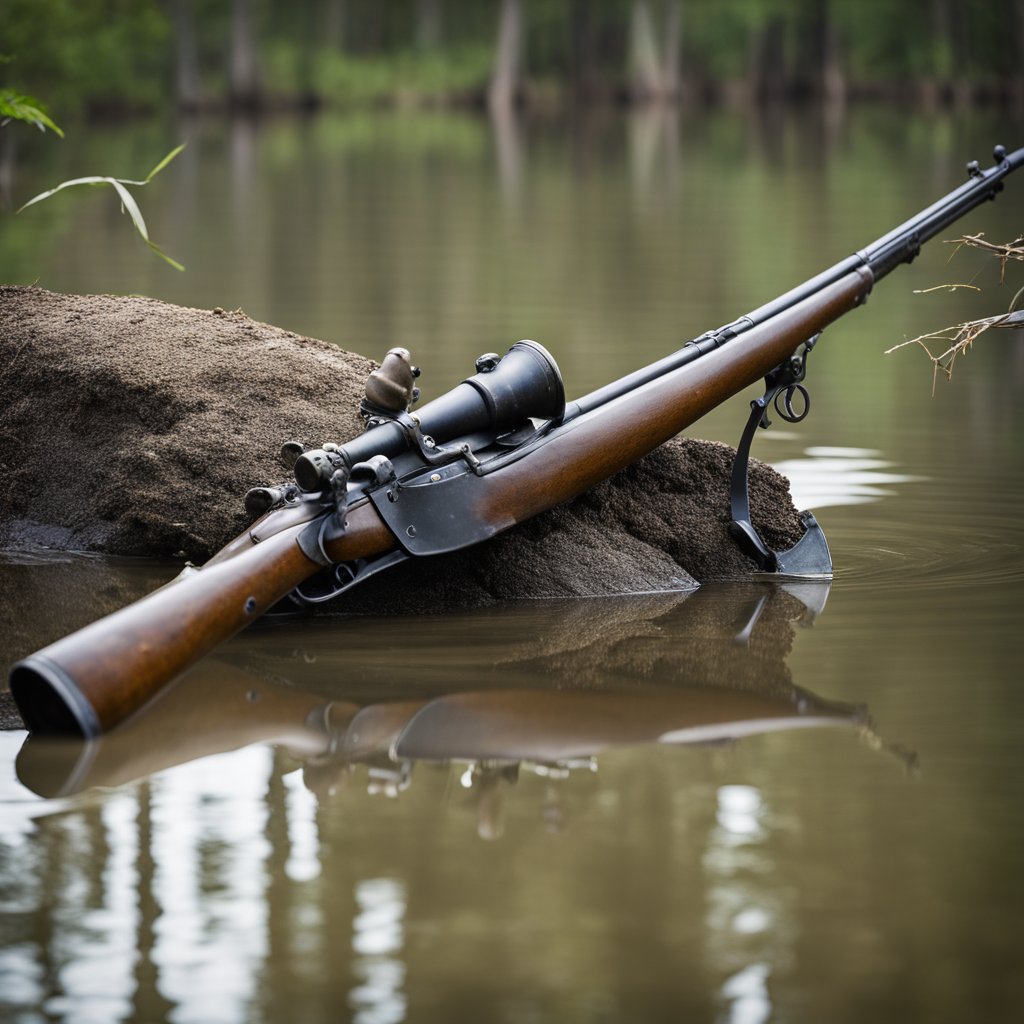
Have you ever wondered what secrets hide beneath the surfaces of placid lakes?
In Lake Wylie, South Carolina, drought conditions have revealed a fascinating glimpse into America's past.
The lakebed has become an unexpected treasure trove of Civil War-era artifacts, offering a unique peek into the history that shaped the region.
What's Been Uncovered?:
- Ammunition: Cannonballs that were once launched in battles over 150 years ago
- Personal Items: Relics from soldiers' day-to-day lives
Imagine stumbling upon a round, metal object while walking along a dried-up lake bed—it's not just a rock, it's a genuine cannonball!
It's a stark reminder of the intense battles that raged in the South during the Civil War.
Historians are excited about these finds as they help us piece together narratives from a time when brother fought against brother.
Here's a bit of what's surfaced:
- Bullets that may have seen the heat of battle
- Buttons from uniforms of the Union and Confederacy
It's not just about the ammunition; personal items unearthed tell the human story behind the conflict.
These artifacts suggest the presence of camps along Lake Wylie's edges, places where soldiers lived, prepared, and, sadly, sometimes left behind their belongings as they marched to the next battlefront.
Did you know that these relics are over a century and a half old?
It's like touching a piece of history that tells a tale of its own.
So, if you're near Lake Wylie, keep your eyes peeled—you never know what piece of history you might find at your feet!
Ancient Petrified Forest in Lake Superior
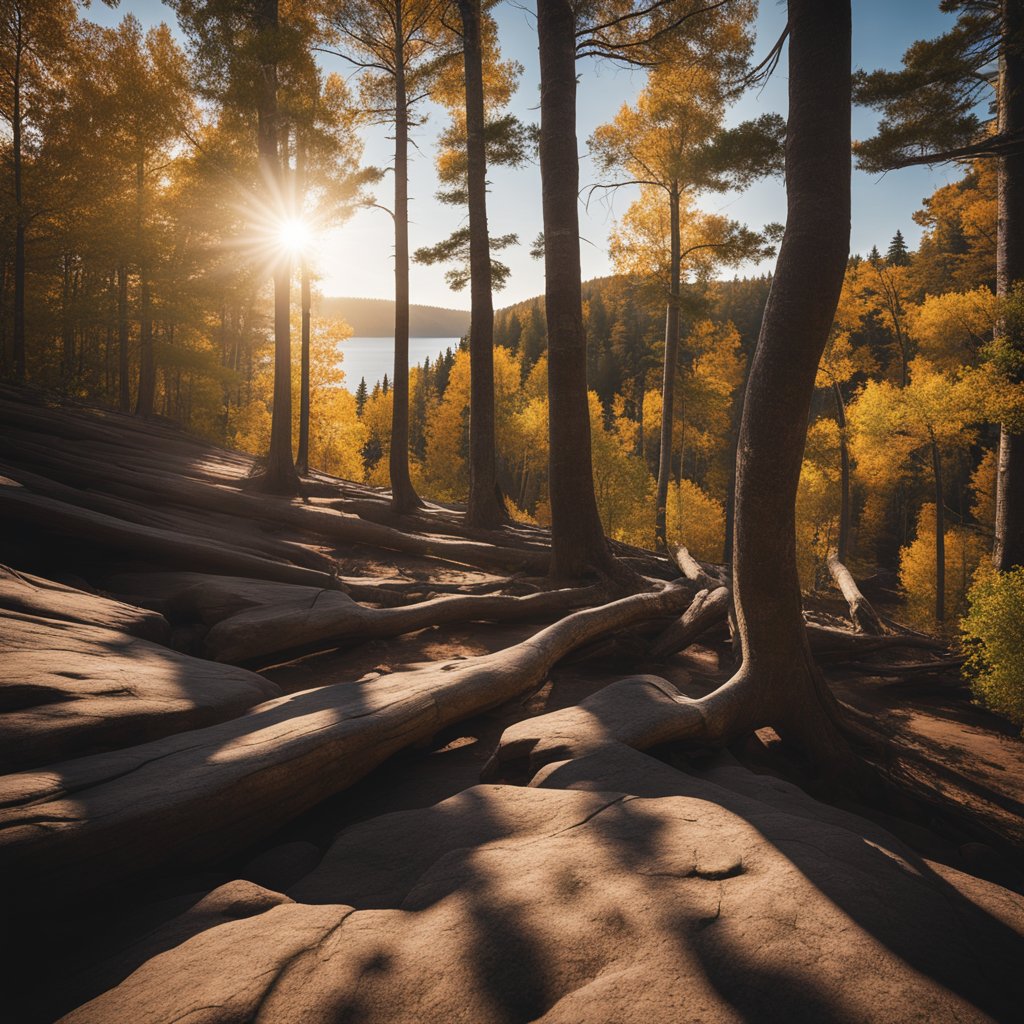
Have you ever imagined walking through a forest that's over 2 million years old?
Now, what if I told you that you could dive into one?
That's right, nestled beneath the cool, deep waters of Lake Superior lies an ancient petrified forest, a hidden page straight out of Earth's lengthy history book.
What's petrification, you ask?
Well, it's a process that turns organic material like wood into stone over a looong time, thanks to minerals!
The petrified remains found in Lake Superior include entire tree trunks and branches that have been so well preserved, they're like natural sculptures crafted by time itself.
- Age: Over 2 million years old
- Found: Beneath Lake Superior
- Includes: Petrified tree trunks and branches
Diving into these waters, you won't just be swimming—you'll be time-traveling!
These remnants of ancient times provide us with a silent, stone snapshot of the kind of forests that once thrived where we now have vast lakes.
They stand as natural reminders of the ever-changing face of our planet.
Imagine the stories these stone trees could tell—tales of a time long before humans walked these lands.
What kind of creatures might have roamed among these trees when they were lush and green?
And how about the climate back then?
So, next time you're gazing across the serene surface of Lake Superior, just think: beneath those waves lies a forgotten forest, petrified in time, waiting for the curious and the adventurous to uncover its secrets.
Isn't our planet just full of surprises?
World War II P-39 Airacobra in Lake Murray, South Carolina

Imagine stumbling upon a well-preserved piece of history beneath the waters of Lake Murray, South Carolina.
That's exactly what happened when a World War II era P-39 Airacobra, used for training missions, was discovered resting quietly on the lake bed.
Did you know?
- Type: P-39 Airacobra
- Location: Lake Murray, South Carolina
- Role: Training aircraft during WWII
This fighter plane is a real-life time capsule from the 1940s.
It offers a peek into the past to history buffs and aviation enthusiasts alike.
Here's what makes this find so special:
- Condition: The aircraft was remarkably well-preserved, considering where it was found. Time and the elements have often been unkind to relics of the past, but this P-39 Airacobra managed to resist them.
- Historical Value: Finding such an artifact in nearly untouched condition provides an invaluable look at the technology and engineering of the time. It's a tangible connection to the era of the "Greatest Generation."
Now imagine the stories this old warbird could tell!
The training flights it witnessed and the pilots it served—all integral threads in the fabric of our history.
- What Happened Next?: Since its recovery, the P-39 Airacobra has undoubtedly become a subject of study and admiration. Pieces like this contribute to our understanding of WWII aviation and the people who lived through those times.
Isn't it astounding how the depths of a lake can hide such treasures, waiting for decades to be found?
Your own piece of history was hiding just beneath the surface—rustic, resilient, and echoing the past.
Pleistocene Era Bones in Lake Okeechobee, Florida
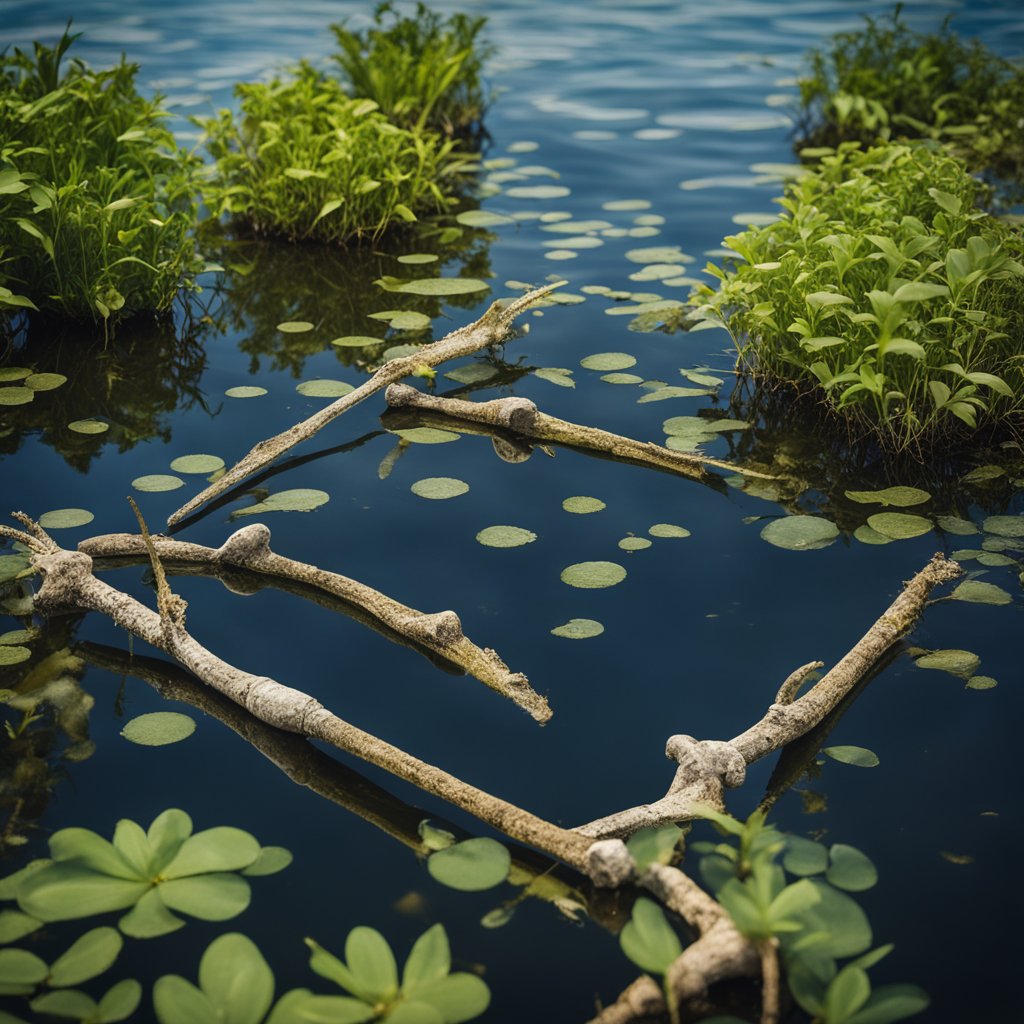
Have you ever imagined walking alongside mammoths or mastodons?
Well, your fanciful thoughts aren't so far from the truth, at least not in prehistoric Florida.
The bed of Lake Okeechobee, Florida's largest lake, is like a hidden treasure trove, especially for those who are captivated by the ancient world.
During periods of drought, this massive lake has revealed some extraordinary finds.
Think of the lake bed as a gigantic history book, where each layer of sediment is a page from a time long gone.
Here's a snapshot of what has been found:
- Extinct Animals: Remains of impressive beasts like mammoths have been unveiled.
- Mastodons: Picture a creature similar to a modern elephant but woollier and, if you can believe it, even bigger.
- Giant Ground Sloths: Yes, sloths used to be giant, and some of their bones were discovered right here!
Could you imagine running into a ground sloth on your morning jog?
Sounds terrifying, but also pretty cool, doesn't it?
These discoveries are significant because they give us clues about the climate, environment, and life in Florida over 10,000 years ago.
They tell us about the survival and extinction of species and the transformations that have shaped our present world.
So, what does all this mean for you?
Well, next time there's a drought and Lake Okeechobee's levels dip, keep your eyes peeled because who knows what other secrets are hidden beneath the surface, just waiting to be discovered by a curious soul like you!
19th Century Steamboat in Lake Minnetonka, Minnesota
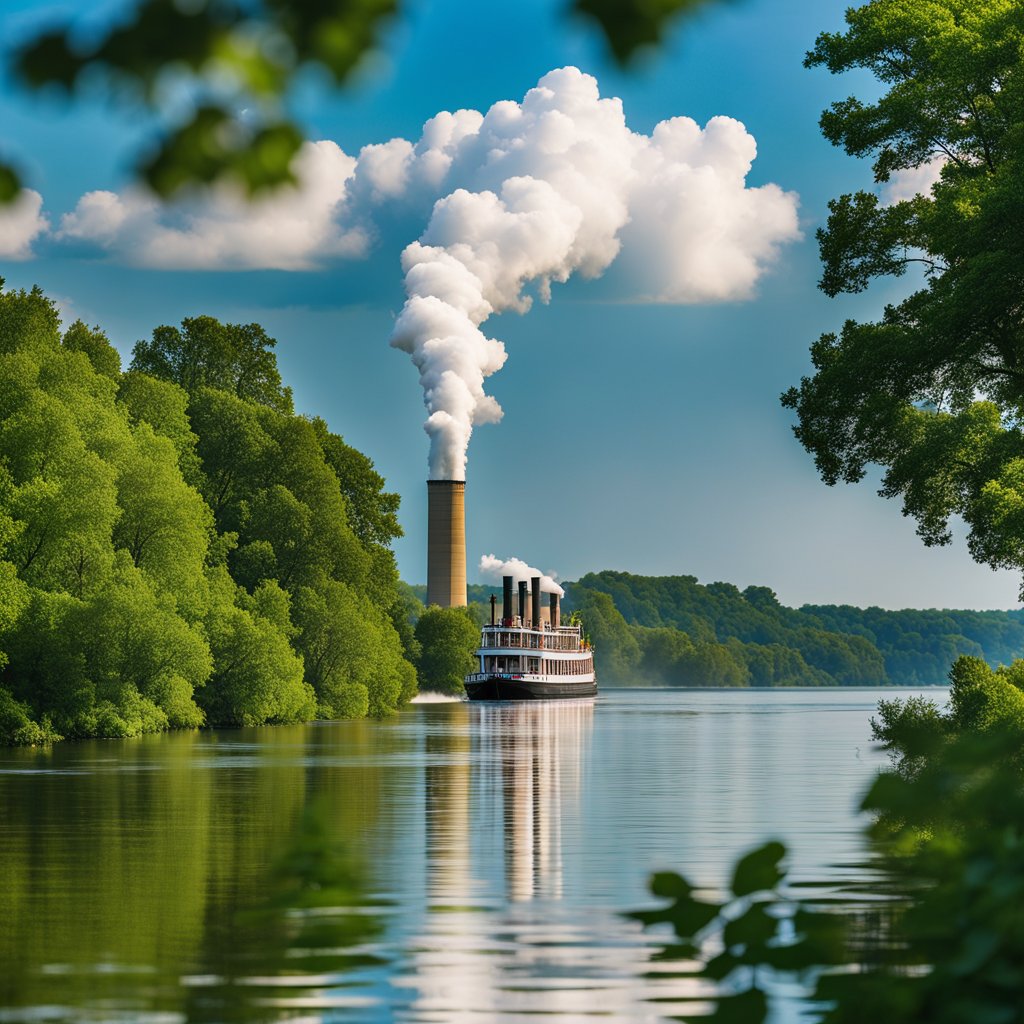
Have you ever imagined what treasures might be hiding beneath the tranquil waters of Lake Minnetonka?
Let’s rewind to the late 19th century, where an unexpected discovery paints a vivid picture of the past.
In the depths of Lake Minnetonka, a rather astonishing piece of history was uncovered.
A steamboat, a relic from the 1800s, was found resting on the lakebed.
It wasn't just any steamboat; it was the Steamboat Minnehaha, a "streetcar boat" that once ferried passengers across this very lake.
Key Facts:
- Name: Steamboat Minnehaha
- Service Period: Primarily 1906 to 1926
- Discovery: Found in the 1980s, sunk in 1897
Imagine the scene – you're out on a boat, the same waters that hid this vessel for nearly a century beneath you.
Now, let’s swim through some details:
- Designation: Vintage "streetcar boat"
- Final Voyage: Sank in 1897
- Resting Place: Lake Minnetonka, Minnesota
Beyond the boat itself, this underwater trove also revealed artifacts from the period.
It's almost like a time capsule, isn't it?
Artifacts Found:
Period-appropriate clothing
Tools and equipment
Personal items from passengers
Why is this find so gripping?
Well, it’s a tangible link to a bygone era, offering us a glimpse into the lives of those who traveled Lake Minnetonka over a hundred years ago.
So next time you gaze out over those peaceful waters, just picture the bustling activity of the Steamboat Minnehaha making its way from shore to shore, alive with the stories of its passengers, now silently echoed in the artifacts left behind.
Gold Rush Era Artifacts in California Lakes

Have you ever imagined walking beside a lake and stumbling upon a piece of history?
That’s what can happen in California, where lakes have given up Gold Rush era secrets, thanks to falling water levels.
Folsom Lake is one such spot where, during droughts, the past resurfaces quite literally.
How incredible is that?
Here's what curious visitors and historians have found:
- Mining Tools: Shovels, pans, and cradle-like devices once used to sift through river silt for gold.
- Personal Items: From gold nugget necklaces to coins, time has preserved a variety of miner belongings.
Fancy diving into a bit of history next time you're lakeside?
Remember, these artifacts are not just cool treasures; they tell stories of the 1848 Gold Rush frenzy where thousands hoped to strike it rich.
And while you're marveling at these finds, think about the hardy souls who once held them.
Their dreams and toils are etched into the DNA of these goods.
Artifacts You Might Spot:
- Clothing: Imagine fabrics from the mid-1800s, resurfaced.
- Glassware: Once held the hard-earned drinks of miners.
- Jewelry: Beautiful, handcrafted pieces reflecting the era's style.
Now, don't go planning to pocket any artifacts you might find.
These pieces of history are best left for all to enjoy and for archaeologists to study.
But it doesn’t hurt to look and wonder, right?
Just imagine the bustling life that once thrived where now only silent waters and the occasional relic remain.
How's that for a lakeside adventure?
Native American Artifacts in Lake Mead, Nevada

Have you ever imagined what secrets are hidden beneath the tranquil waters of Lake Mead?
As the waters recede, the mystique of a submerged history is revealed.
Picture this: once-inaccessible remnants of ancient Native American culture emerging like a time capsule from the depths.
It's not just a figment of imagination, but a reality at Lake Mead, Nevada.
Key Discoveries:
- Hearths: These were the ancient kitchens, where meals were prepared over open fires.
- Pottery: Imagine holding a piece of clay molded by hands centuries ago.
- Tools: From hunting to crafting, these tools were vital to daily life.
The Ancestral Puebloans left behind a treasure trove of artifacts.
Coincidentally, these artifacts mirror the famed Puebloan cultures of the Four Corners region (Utah, Colorado, New Mexico, and Arizona).
Can't you feel the sense of connection with the past?
It’s as if the Ancestral Puebloans are reaching out through their relics, giving us a glimpse into their lives.
Don't you just wonder how these everyday objects were used?
Were they part of a family meal, a ritual, or a child's play?
These artifacts are not only precious archaeological finds but also storytelling devices that transport us to a distant time.
Remember, history is in every shard, every fragment that rests on the lake bed.
They speak volumes about the ingenuity and adaptability of the Native Americans who thrived in this region over a thousand years ago.
Isn't it amazing how a lowering lake gives us back such rich history?
Let's cherish and protect these links to our past.


